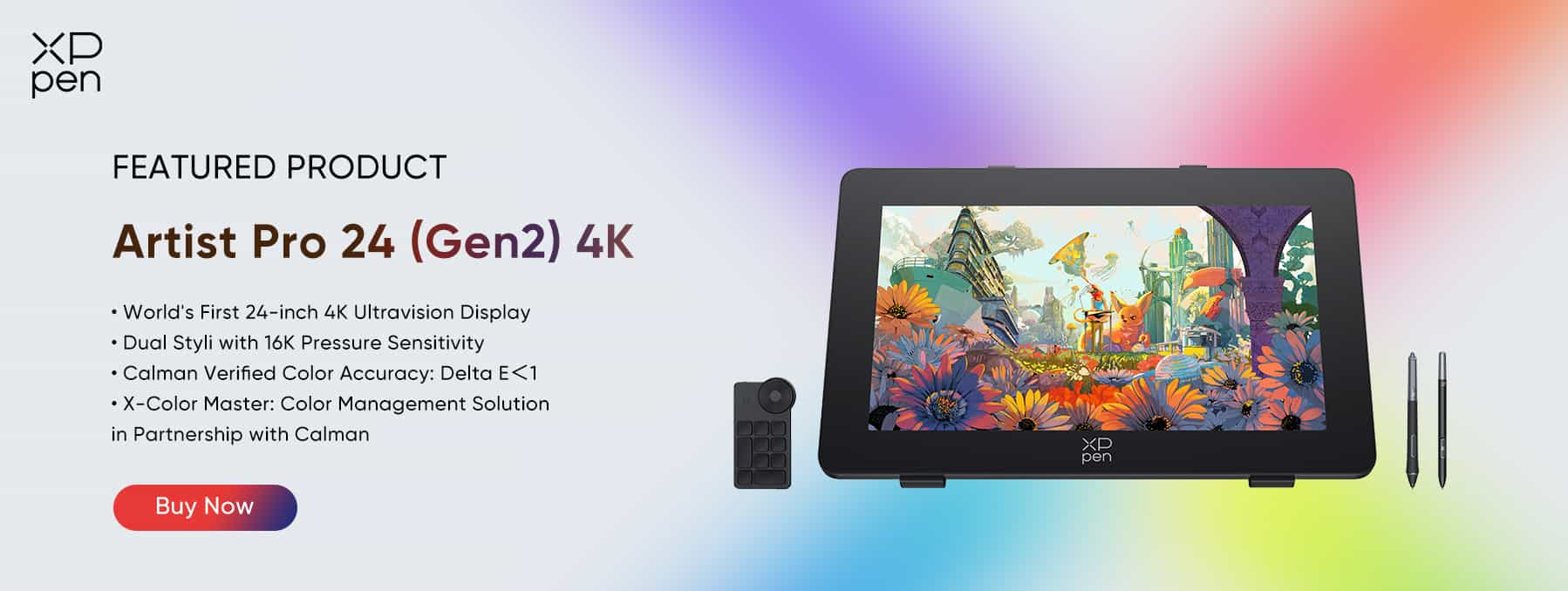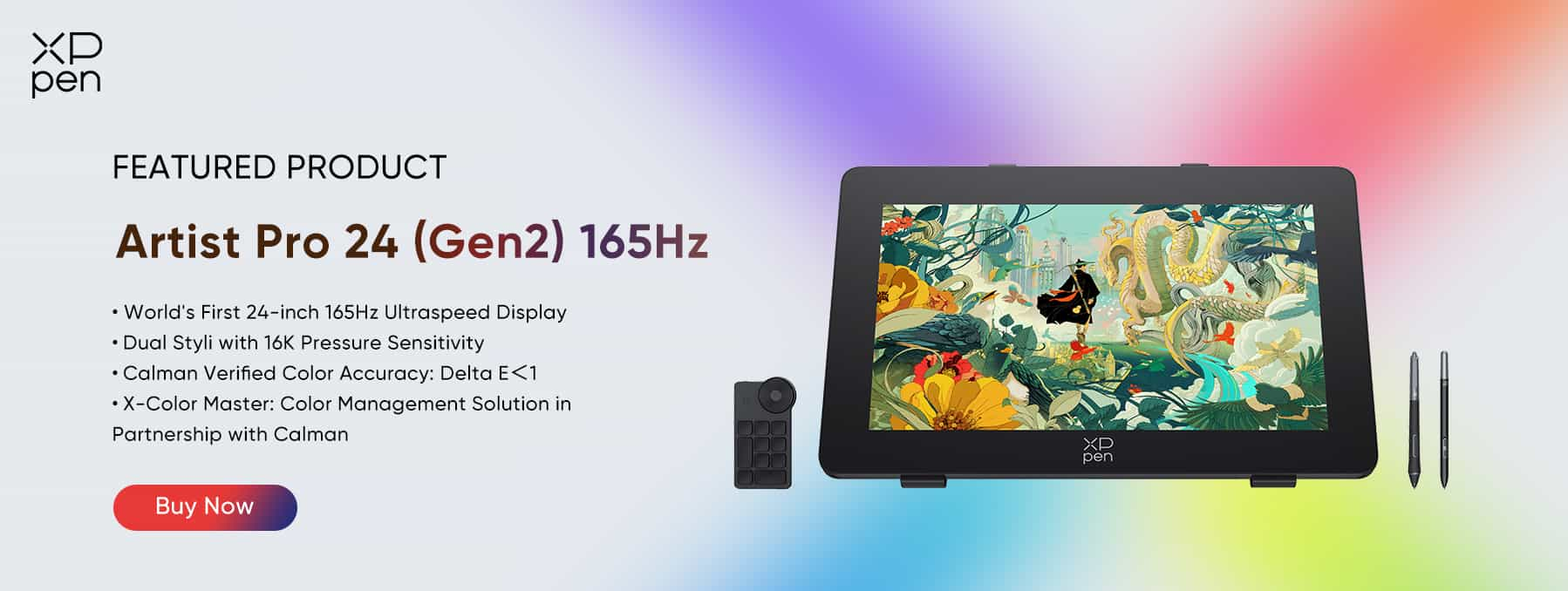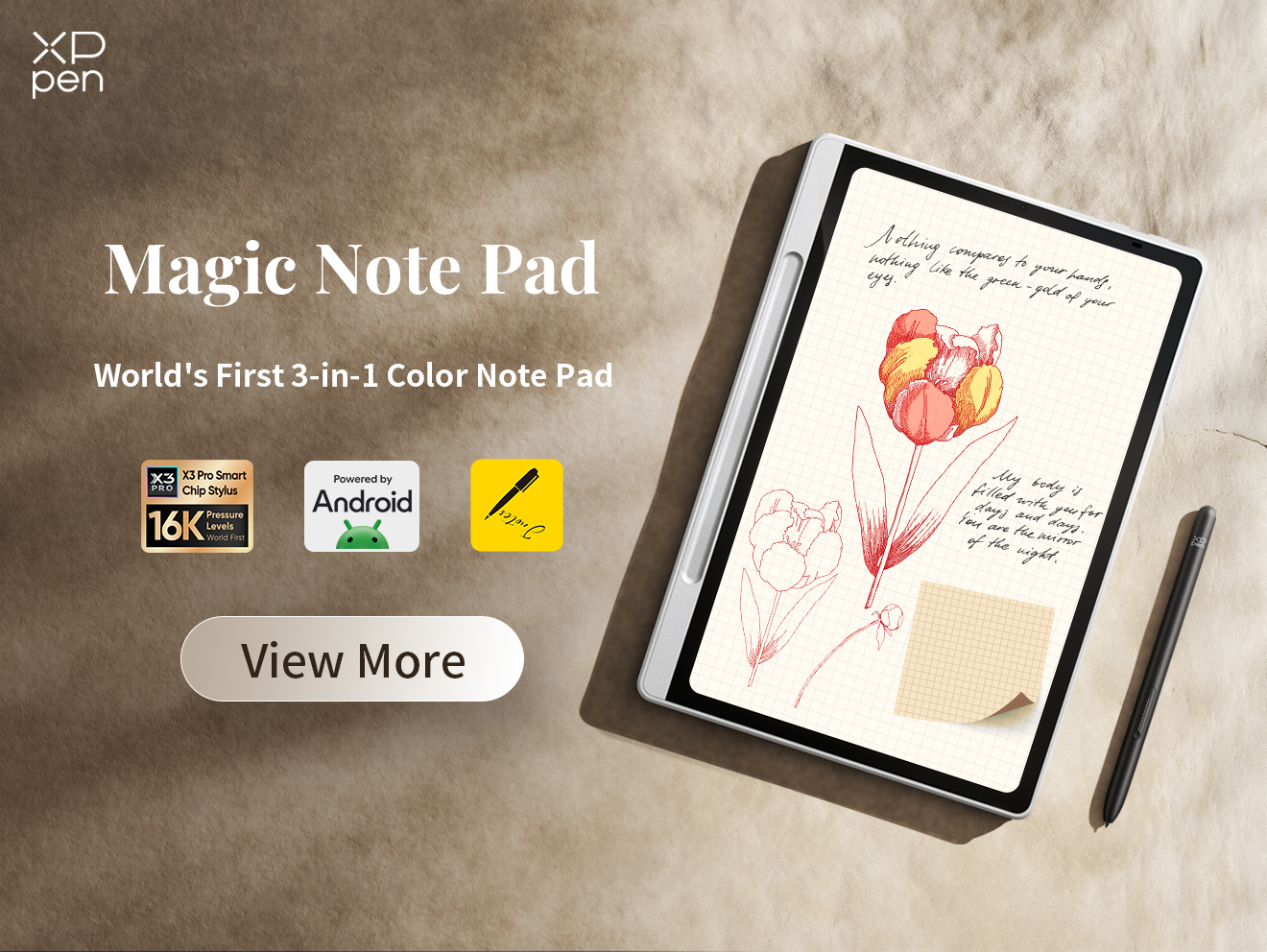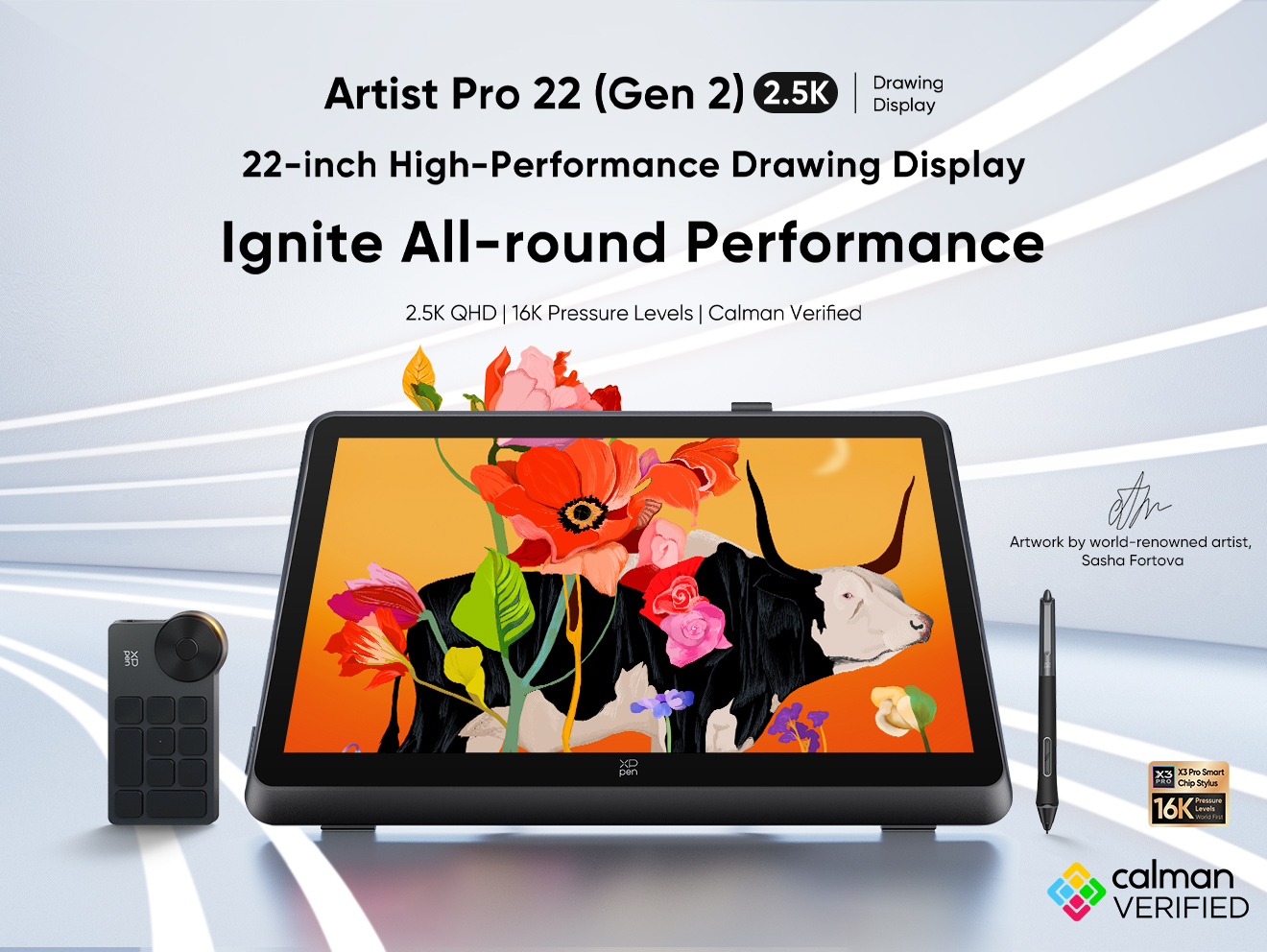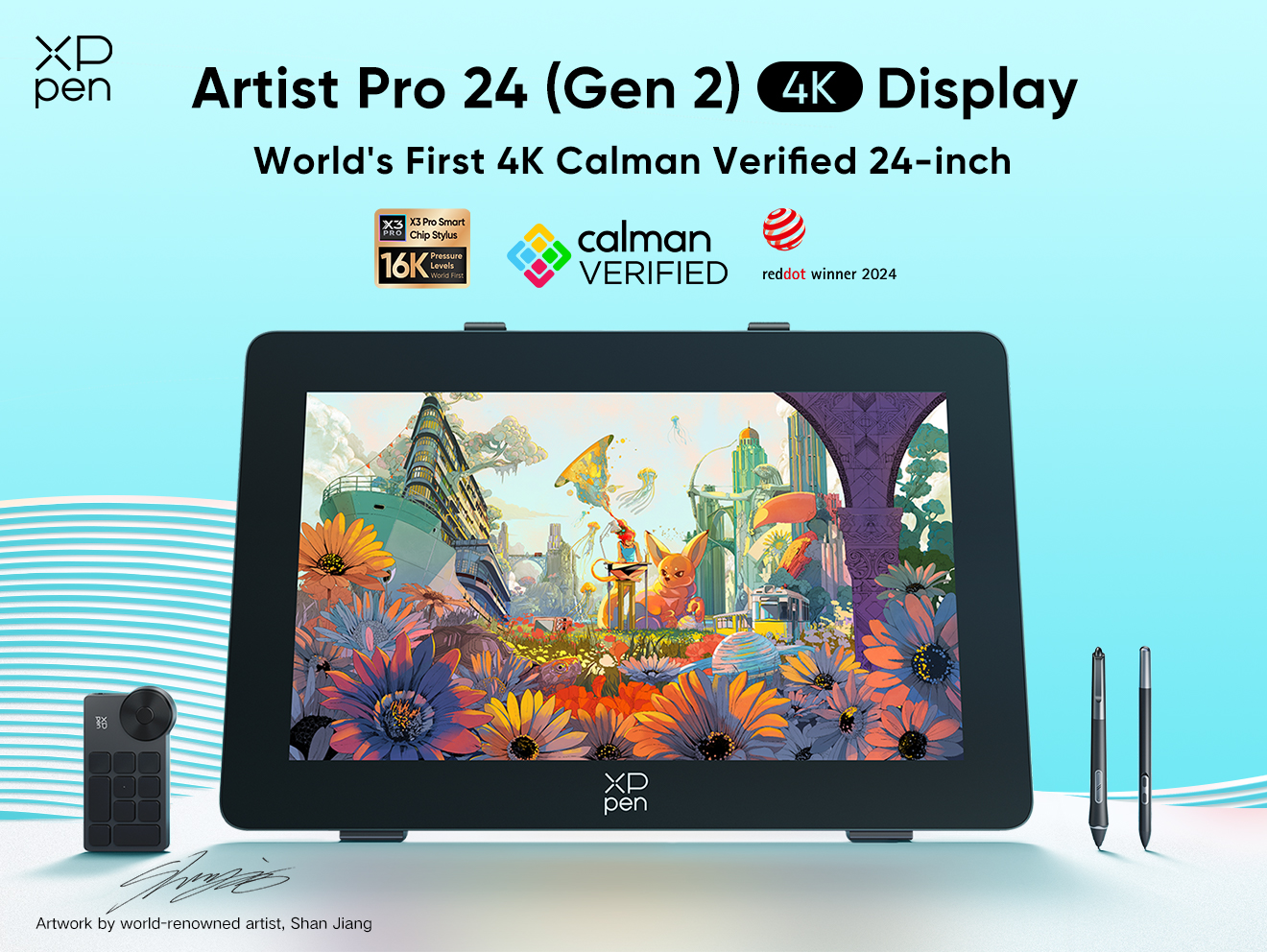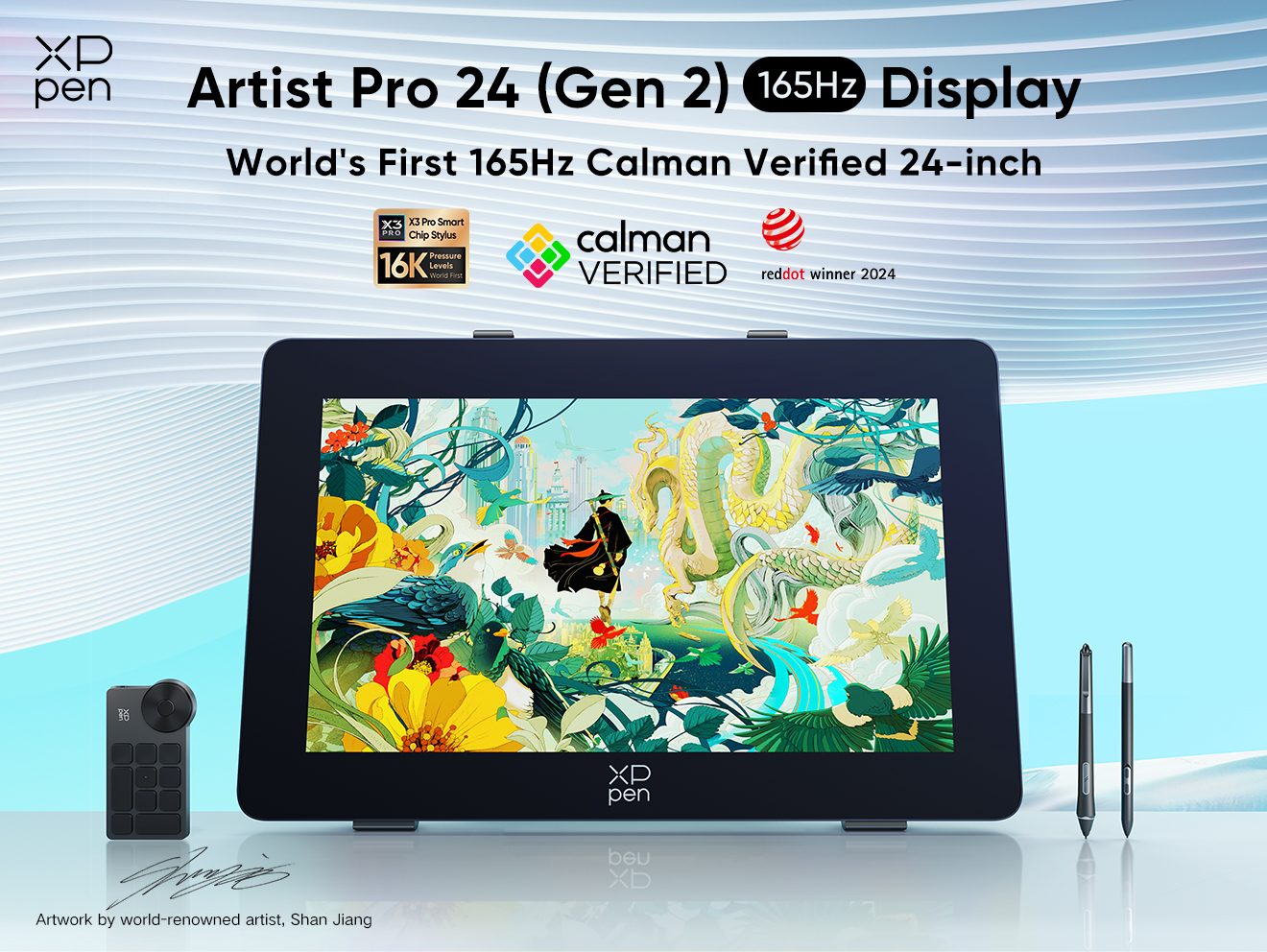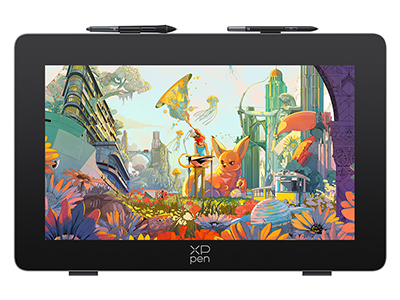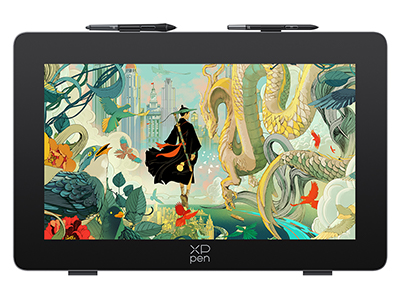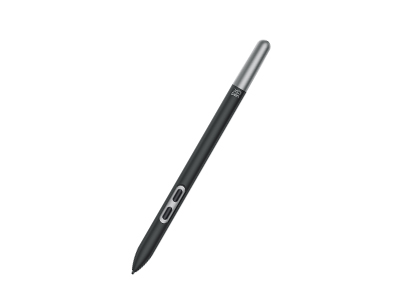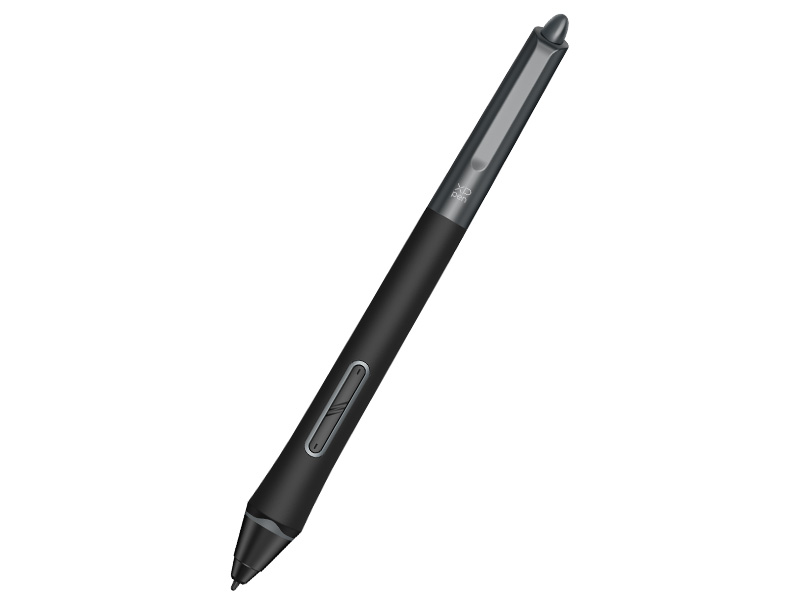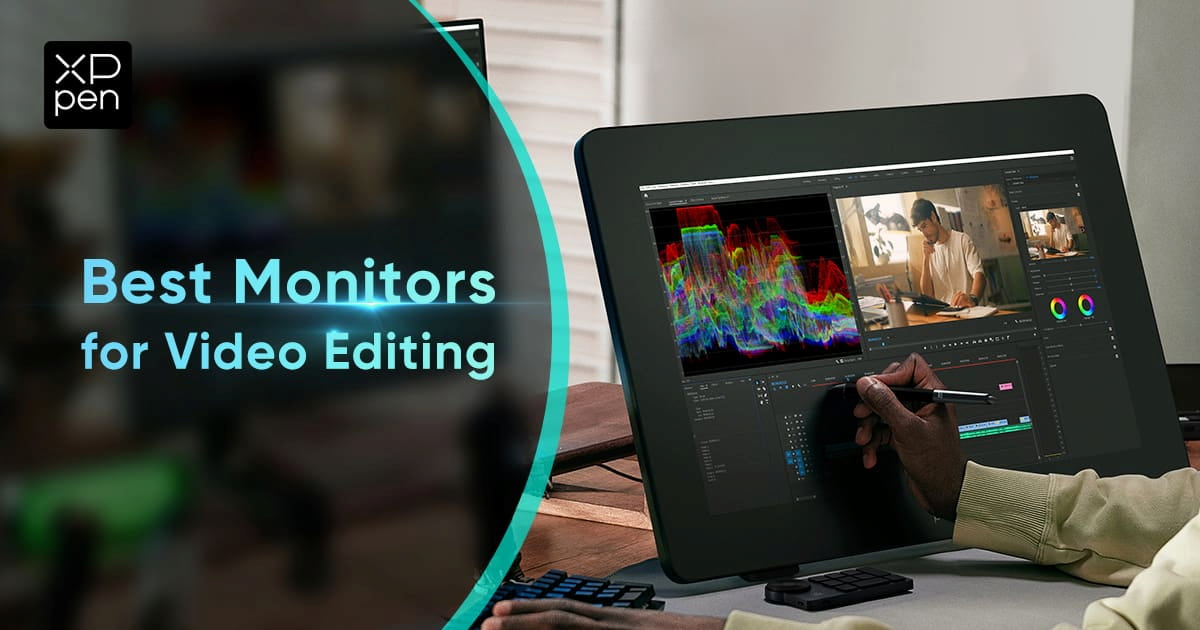
Best Monitors for Video Editing, Gaming & Color Correction
ROUNDUPSIn an age of mobile phones and laptop screens, the monitor has remained the best way to see the digital experience.
Monitor choices often depend on what you need one for. Displays offer different resolutions and screen sizes. Screens vary by color accuracy and refresh rate.
Some options come as large, curved, ultra-high-definition displays while others are compact, flat and perfect for day-to-day use.
Understanding your options will help you pick the best monitor for video editing, gaming and color correction. In this article, we check out the top monitors for art and design, delving into their specs, features and capabilities.
Whether looking for an affordable screen ideal for everyday tasks or on the hunt for a top-end, high-spec monitor that takes your editing, gaming or digital experience to the next level, you’ve come to the right place.
Introduction
Monitors are everywhere. From offices and schools to homes and retail stores, monitors are often the only way to interact with digital devices. Some people may remember the big, bulky CRT box monitors that occupied all your surface space.

Others are likely to be more familiar with classic, lightweight LCD monitors. Since modern LED monitors entered the game, screens have quickly evolved into a wide array of high-quality, powerful hardware options that have revolutionized how we interact with computers and devices.
Since the first monitor was introduced for the Xerox Alto computer in 1973, displays have evolved from basic monochrome screens into advanced technology like touch-screen LCD monitors and ultra-wide, ultra-high-def curved screens.
Today’s $44 billion monitor market is dominated by large players like LG, Samsung, Dell, HP and other electronics manufacturers – each with their own brands and monitor categories. Other, smaller brands are emerging, focused on monitors specifically, delivering more performance and choice. The top monitor brands offer high reliability and excellent performance.
With annual manufacturing expected to exceed 250 million monitor units by 2028, according to Statista, and a growing number of monitor types emerging, finding one that’s right for you can be tricky. Monitor prices are equally diverse. While monitor pricing trends are decreasing, prices range from around $100 to $150 for smaller, lower-quality screens to as much as $1,000 or more for top-of-the-line premium displays.
Monitors vs. Displays vs. Screens
A screen is the physical glass or plastic surface of a monitor or display. Screens are integrated into these devices, but the word screen is often used to refer to a monitor or display, too. Monitors refer to the stand-alone devices that plug into a PC or other piece of equipment – this is what we’ll be looking at in this article.
Displays can refer to anything that broadcasts an image, from your TV to a digital shop window advertising board and even your phone. Tablets are also considered displays, however, they can now double as monitors too. But we’ll get to that a little later.
Since these three terms are widely used interchangeably in casual language, in this article, we’ll be using all of them to refer specifically to monitors, unless otherwise indicated.
How to pick the best monitor
Monitors come in a variety of different sizes and types, making use of various technologies to deliver performances measured by metrics like resolution, refresh rates, color accuracies and features. Here, we briefly touch on some of the most important factors and specifications for picking the best monitor.
Monitor size
This refers to how big the screen is. Sizes are most commonly indicated by inches, measured diagonally across the screen, from corner to corner. So, for example, a 23-inch screen with a standard 16:9 aspect ratio will measure around 20 inches wide and 11 inches high.
Screen size is often the first thing to think about when picking the best monitor for video editing and color correction. Larger screens allow for more room to maneuver when performing editing tasks, for example. And more surface area allows for improved accuracy when adjusting to ensure that colors appear as intended on screens. However, smaller workspaces may limit screen size options, or gamers sitting close to their screens may not need larger areas.
Aspect ratios
Like screen size, aspect ratios play a critical role in how to pick the best monitor. Ratios are indicated by two numbers, separated by a colon, and they tell you how wide a screen is (the first number) compared to how high it is(the second digit). An ultrawide 21:9 aspect ratio means that for every 21 units of measure of width, the screen is 9 units high. In other words, for every 1 inch you go horizontally, the screen measures just 0.43 inches vertically.
Ratios are especially important when considering what you’ll be using your monitor for. Recently, wider screens are becoming more popular, with the classic 16:9 ratio being replaced by 21:9 and even 32:9 superwide configurations. These screens are useful for editing, complex work requiring more viewing space and some gaming scenarios. Aspect ratios also determine the resolution and PPI offerings the monitor can support.
Resolution & pixels per inch (PPI)
Resolution and pixels per inch (PPI) are the next things to consider when picking a monitor. Resolution, expressed as two numbers, usually separated by an “x” measures the number of pixels that can be displayed on a screen. PPI shows us pixel density per inch of screen. As a general rule, the higher the resolution, the higher the PPI, naturally.
Users working with high dynamic range or "HDR" content need higher resolution and PPI, especially when searching for a best monitor for graphic design and video editing.
This is because HDR technology allows you to see intricate detail in an image's brightest and darkest areas. Photographers, video editors, and gamers playing dimly-lit games should prioritize this metric when choosing their next monitor.
Panel & Display Type
Next, we should understand the panel type of monitors out there. This refers to the technology used for projecting an image onto the monitor’s screen. There are quite a few different types of monitor panels.
IPS: Offers a larger viewing angle, with excellent image quality. IPS monitors are great for image editors and designers who want to enjoy better color accuracy.
VA: This panel type is known for delivering high contrast ratios. Perfect for video editors and movie lovers.
TN: Is a top panel type when it comes to lightning-fast refresh rates and response times. Popular among gamers.
OLED: The premium LED panel type most often found in curved ultrawide screens. OLED can get expensive but delivers on viewing angle range, color accuracy and speed performance.
QD-LED: This panel type uses newer LED technology designed to provide a better cinematic experience.
Refresh rate
A monitor’s refresh rate describes how many times per second a display updates the information on it. Measured in hertz (Hz), refresh rates range from 60Hz to as high as 500Hz or more. Refresh rates are linked to PPI, and the higher the PPI, the higher the refresh rate should be. Important for gamers, graphic designers and editors working on high-definition video content.
Color accuracy
Monitors need to display their colors correctly and color accuracy is critical when looking for a best monitor for video editing. Imagine a photographer editing their pictures on a screen that has incorrect color output. Color accuracy can be tested on a monitor using a calibration tool. Good color accuracy is especially vital for editors and designers.
Mode & connection options
Most basic monitors require a power cable and an HDMI port to connect to their energy source and computer, respectively. But some monitors now offer USB-C, Thunderbolt 3, and DisplayPort connections, making them useful for changing devices or adding ports.
Pre-set options allowing users to switch quickly and easily between different screen modes and traditional screen setting buttons are still valued on most monitors, though many have these as digital app and program selections.
Best Monitor for Seamless Video Editing, Gaming & Color Correction
We’ve researched and selected a selection of the best monitors for seamless video editing, gaming and color correction, based on the important elements we’ve just mentioned above.
Best ultra-wide monitor - Samsung 57" Odyssey Neo G9 G95NC
52” screen size | 7680 x 2160 resolution | $1,999.99
At 57 inches, the Odyssey Neo G9 is one of the biggest ultra-wide monitors out there. With the 32:9 ratio supporting a 7680 x 2160 resolution, displays don’t get much bigger (or wider) than this. This large ultrawide screen will set you back in the region of $2,000, but don’t let that put you off if you’re looking for something game-changing.
The 1000R curved screen boasts Samsung’s premium Quantum Matrix Technology and, at 240Hz refresh rate, the world's first dual UHD monitor boasts a 140PPI detail. HDMI, DisplayPort 2.1, and USB Hub options provide great versatility. Lightning-quick 1ms response time, plus low input lag, make this a pro gamer’s delight. Higher contrast ratios than most other ultra-wide monitors, coupled with a screen surface area equivalent to two 32-inch, 4k monitors next to each other, makes this Samsung beast of a monitor an all-round ultra-wide winner.
Special mentions:
Ultra-wide gaming: Dell Alienware AW3423DWF (34”)
Ultra-wide video editing: ViewSonic VP3881a (38”)
Ultra-wide color correction: LG 40WP95C-W (40”)
Best Curved - Dell UltraSharp 40 Curved Thunderbolt™ Hub Monitor - U4025QW
2500R curvature | 21:9 aspect ratio | $1,919.99
Curved screens are fast becoming a top choice, and the Dell Ultrasharp 40 Curved Thunderbolt Hub Monitor is setting the pace. This 40-inch monitor is a 5K curved screen world-first, with a solid 120Hz refresh rate, 140 PPI and 21:9 aspect ratio combining for a truly immersive experience. The $1,919.99 price tag reflects the monitor’s quality and potential.
The screen’s 2500R curvature delivers a visual experience like no other. Advanced features, including ambient light sensor and connectivity highlights like Thunderbolt 4, make multitasking a breeze and position this option as one of the top best monitor for graphic design and video editing choices. Gaming is responsive and smooth, and advanced color management modes will surely please editors and designers.
Other contenders:
Curved gaming: Corsair Xeneon 34WQHD240-C QD-OLED (1800R)
Curved video editing: Philips Evnia 34M2C8600 (1800R)
Curved color correction: HP E45c G5 DQHD Curved Monitor (1500R)
Best Dual Screen SetupBenQ PD2725U
Daisy Chain? Yes | USB, Thunderbolt 3, HDMI, DisplayPort | $899.99
When looking for a monitor to work seamlessly alongside another, the BenQ PD2725U bundles premium specs with easy connectivity and seamless pairing. Boasting a wide array of ports, including a USB Hub, Thunderbolt 3, and DisplayPort, this 27-inch, 4K monitor is a perfect dual setup option. At $900, this quality screen is a great buy.
Mac-compatible and created for designers, this flagship of BenQ’s DesignVue Monitors range is a clear favorite for dual-screen setups. With DCI-P3 color space, HDR, and rich color modes, the PD2725U can be daisy-chained into a series of displays or linked straight to another via one of the many connectivity options.
Bubbling under:
Dual-screen setup gaming: MSI MAG 274UPF (HDMI, DisplayPort, USB-C)
Dual-screen setup video editing: BenQ PD3220U (HDMI, DisplayPort, Thunderbolt 3, USB-C)
Dual-screen setup color correction: Dell U2723QE (HDMI, DisplayPort, Thunderbolt, Audio, LAN)
Best Resolution - Dell UltraSharp 49 Curved USB-C Hub Monitor U4924DW
5K Dual QHD 5120 x 1440 resolution | IPS panel type | $1,359.99
When 4K simply isn’t enough, but 6K or 8K is overkill, a monitor like the Dell UltraSharp 49 conquers all. Yes, at $1,359.99, it’s on the pricier side, but the 49-inch Dual QHD 5K curved display delivers an incredibly detailed image, designed to thrill. The screen’s IPS black panel technology delivers exceptional color, deep contrast with 100% sRGB, 100% REC.709, and 98% DCI-P3. 5K resolution really does deliver here.
The UltraSharp 49’s added enhanced eye comfort features mean you can enjoy hours of high-resolution work, enhanced by the two 27" QHD partition capability or connect two PC sources for double the gaming action on the iMST-powered split-screen. Plus, there's the benefit of over 10 ports, including two HDMI with HDCP 2.2 ports, DisplayPort, USB-C and networking access. Ideal if your’re looking for the best monitor for graphic design and video editing.
Strong alternatives:
Best resolution gaming: Samsung Odyssey CRG9 (5K - 5120 x 1440)
Best resolution video editing: BenQ SW321C PhotoVue (4K - 3840 x 2160)
Best resolution color correction: Apple Studio Display (5K - 5120 x 2880)
Best Refresh Rate - ASUS ROG Swift Pro PG248QP 540 Hz (OC)
540Hz refresh rate | 91 PPI | $649.99
The world’s fastest monitor, with a reported 540Hz warp-speed refresh rate, the Asus Rog Swift Pro is a championship-contending monitor. Don’t be fooled by the modest 24-inch panel size. The TN-type LED 1080p display is built with gaming in mind, primed with NVIDIA’s ULMB 2 and Reflex Analyzer features, putting customization and control in your hands.
When you’re not gaming, the Swift Pro’s HDR and wide gamut color features meet high-speed smoothness and responsiveness, making it a best monitor for video editing and color correction and also a top processing option for serious creators. At a modest $649.00, this high-speed display is a worthy winner and a solid investment.
Next best:
Best refresh rate gaming: Alienware AW2524HF (500Hz)
Best refresh rate video editing: LG 32GS95UE-B (480Hz)
Best refresh rate color correction: Corsair Xeneon 32QHD165 (165Hz)
Comparison: Best monitors for video editing, gaming and color correction
| Category | Monitor | Type | Size | Ratio | Ports | Resolution | Refresh Rate | Price |
|---|---|---|---|---|---|---|---|---|
| Best Ultra-Wide | Samsung 57" Odyssey Neo | VA LED | 57” | 32:9 | 7 | 7680 x 2160 | 240Hz | $ 1 999.99 |
| Best Curved | Dell UltraSharp 40 Curved Thunderbolt™ | IPS LED | 40” | 21:9 | 14 | 5120 x 2160 | 120Hz | $ 1 919.99 |
| Best Dual Setup | BenQ PD2725U | IPS LED | 27” | 16:9 | 8 | 3840 x 2160 | 60Hz | $ 899.99 |
| Best Resolution | Dell UltraSharp 49 Curved USB-C Hub | IPS LED | 49” | 32:9 | 14 | 5120 x 1440 | 60Hz | $ 1 359.99 |
| Best Refresh Rate | ASUS ROG Swift Pro | TN LED | 24” | 16:9 | 6 | 1920 x 1080 | 540Hz | $ 649.00 |
Unlock More Possibilities: Use Drawing Tablets as Monitors
While monitors offer the optimal visual digital experience, other display devices are closing the gap on their desktop counterparts. Smaller, lighter and now, almost as good as monitors, tablets and drawing displays are proving amazing alternatives for top color-accurate monitors for creative editing and graphic design.
As the top tablets evolve to boast more processing power, accuracy, and exceptional color capabilities, designers, creatives, and editors are turning to these mobile resources more and more. Add in the unlimited possibilities offered by smart stylus pens and the intricate touch and pressure sensitivity they come with, and the new digital canvas isn’t on a desktop PC or laptop, they’re unfolding on the screens of premium design and drawing tablets.
Even Better: Top Color Accurate Monitors for Creative Video Editing & Graphics Design
XPPen Artist Pro 24 (Gen2) 4K & XPPen Artist Pro 24 (Gen2) 165Hz Drawing Displays
The XPPen Artist Pro 24 (Gen2) is a drawing display that combines the power of a premier drawing tablet with the utility of using it also as a versatile monitor. Available as both a high-definition 4K Ultravision display or with an industry-first 165Hz Ultraspeed refresh rate, photographers, graphic designers, video editors and top creatives now have the best of both worlds – the power to draw and the display to experience it.
Game-changing resolution and smoothness
As a drawing display, the XPPen Artist Pro (Gen 2) outperforms many of its peers whether you’re in need of that 4K resolution or 165Hz refresh rate. The display provides XPPen’s industry-best 16,384 ultrasensitive pressure levels, transforming the 2nd-generation device into a multi-faceted design and editing tool. Built with cutting-edge AG Nano Etched AF Coating glass, users enjoy significantly reduced glare, the durable material also virtually eliminating fingerprints. Built for mobility and high robust, the XPPen Artist Pro (Gen 2) is a perfect mobile monitor option.
The Artist Pro 24 (Gen2)’s 4K Ultravision display offers next-level clarity across the 24-inch screen, boasting 3840 x 2160 resolution, delivering immersive clarity and color.
The Artist Pen 24 (Gen2)’s 165Hz Ultraspeed display delivers a 2.5K QHD 2560 x 1440 resolution viewing experience, providing next-gen smoothness at 165 refreshes per second.
Color like no other
Powered by X-Color Master color management for high color accuracy, delicate color presentation, and efficient color calibration, alongside sRGB, Adobe RGB and Display P3 color spaces, the Calman-verified color scope represents a color calibration benchmark.
XPPen Artist Pro (Gen 2) 4K comes with1.07 billion colors and a 300cd/m2 brightness, transforming the display into a window of digital wonders.
While the XPPen Artist Pro (Gen 2) 165Hz boasts 16.7 million display colors at up to 250cd/m2 brightness, with less flickering and unmatched line smoothness, what more could you want?
Twice the X3 Pro stylus power
The display comes with not one, but two X3 Pro styli – the X3 Pro Smart Chip Stylus and the X3 Pro Slim Stylus. The brand’s flagship pens transform the display into an interactive drawing surface monitor, delivering nanometer accuracy and incredible smoothness.
Next-gen adaptability and connectivity
Users can take advantage of the built-in ACS02 stand allowing for flexible angle adjustment, or opt for the ACS15 stand, transforming the display into a full desktop monitor. The ACS15 also enables free rotation and more accurate height and angle adjustment. A standard 100mm x 100mm VESA port also provides the versatility to attach the display to compatible stands.
Enjoy landscape-portrait pivot-rotation and connection options via a selection of compatible cables. From USB-C to DisplayPort and HDMI – whatever you need – the XPPen Artist Pro 24 (Gen2) Drawing Display is changing the game.
| Model | Size | Type | Resolution | Refresh Rate | Colors | Mode | Price |
| Artist Pro 24 (Gen 2) 4K | 23.8 inch | X-Color Master 4K Ultravision | 3840 x 2160 | 60Hz | 1.07 Billion | USB-C, Display Port, HDMI | $1104.99 |
| Artist Pro 24 (Gen 2) 165Hz | 23.8 inch | X-Color Master 2.5K QHD | 2560 x 1440 | 165Hz | 16.7 Million | USB-C, Display Port, HDMI | $934.99 |
Conclusion
Finding the best monitor for graphic design and video editing can be daunting. But if you know what you need to meet your expectations and understand what sets the best monitors apart, finding one that ticks all the boxes will be easy.
Monitors are always changing. From the best monitor for video editing’s refresh rate to the best monitor for graphic design’s high resolution and clarity. Whether you’re hunting for the best monitor for gaming at high speeds, need a display that spans the width of your workspace to enhance productivity or simply a quality screen built to enjoy your favorite movies, knowing which ones can do the job matters.
But for creators, creatives and designers, transforming the supremacy of premium drawing tablets into versatile drawing displays can change how they approach their work. By combining the power of high-accuracy drawing surfaces with the potential offered by rich color experiences and high-performance smoothness, drawing displays are now more than just a window to look into the digital world – they are open doorways.
FAQs
What size monitor is best for video editing?
Depending on your video editing needs, going smaller than a 24-inch screen can compromise your ability to edit well. The smaller screens limit detail and can make editing difficult to execute accurately. Consider larger screens with good resolution and higher refresh rates.
Does monitor refresh rate affect video editing?
Yes. Lower refresh rates can impact motion smoothness, limit color accuracy and cause flickering. These issues can degrade the editor’s ability to ensure frame-by-frame precision and reduce the overall video quality.
Does refresh rate affect video quality?
The more frequently a screen refreshes, the more often the pixels update to display changes in motion or color. Lower refresh rates can make videos seem “sticky”, causing flickering or stop-start movement. Higher refresh rates, however, dramatically improve video smoothness and color accuracy.
About Us
Originated from 2005, XPPen is now one of the top brands under HANVON UGEE, integrated with digital drawing products, content and service as a globally notable digital brand of digital art innovation.
Learn moreRecommended Articles
KNOWLEDGE sRGB vs Adobe RGB vs Others: Which Color Space is Best for Photos, Videos, and Printing? ROUNDUPS Top Monitors for Digital Artists & Graphic Designers ROUNDUPS Best 24-inch 165Hz Monitors: Top Picks & In-depth Reviews